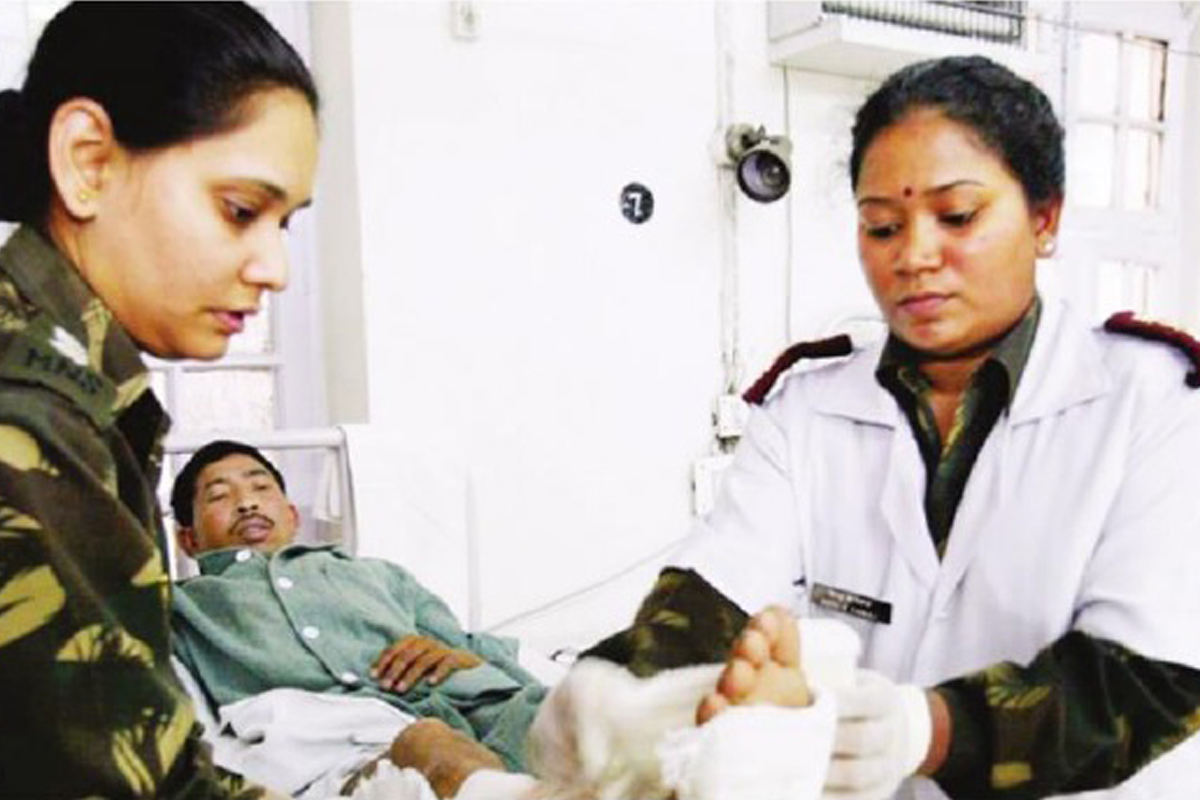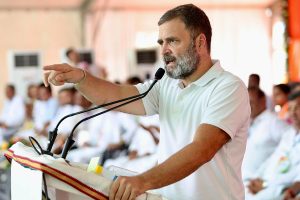In April this year, the Ministry of Defence directed that the Ex-Servicemen Contributory Health Scheme (ECHS), created for military veterans and handled by the Department of Ex-servicemen Welfare of the MoD, would function under army control but remain under the same department for release of funds and approvals. This was possibly because the MoD wanted to avoid facing flak for any failure to provide promised services to veterans. They wanted the army to face veterans’ anger, while they remained in the background. The ECHS was rolled out on 1 April 2003 intending to reduce dependency on overburdened military hospitals. Every member pays a one-time subscription for joining the scheme.
Currently an officer pays Rs 1.2 lakh, a Junior Commissioned Officer Rs 57,000 and a jawan Rs 30,000 to become a member. Over the years, ECHS instead of improving has faced deterioration mainly due to shortfall in allocation of funds and mismanagement in selection of hospitals. Multiple avenues of control and cumbersome procedures have added to woes of veterans seeking medical care. The ECHS runs its facilities through 28 regional centres and 427 poly clinics across the country. It has over 2,700 empanelled hospitals. The situation is now so grave that rumours are afloat to the effect the armed forces may be compelled to return to the old system of health care, implying dependence on overburdened military hospitals, as the scheme faces financial shortcomings caused by lack of release of funds.

When the army took over responsibility of the ECHS in April this year, it was handed pending hospital claims amounting to Rs 2,200 crore. It therefore asked for a budget of Rs 5,700 crore, firstly to clear old dues and secondly to cater for health needs of the current year. It was allocated only Rs 3,200 crore. The management had two risky options. If it cleared pending bills, it would have a very limited amount for the current year and could cater for under six months of medical supplies. On the other hand, if it did not clear pending hospital dues, then hospital care would be blocked. In either case, it would face the wrath of veterans. The dire situation was flagged by service chiefs to the finance ministry.
Nirmala Sitharaman, as the finance minister, publicly announced an additional allocation of Rs 3,500 crore, which remains just an announcement till date. Non-release of additional funds would result in an increase in pending healthcare bills and add to burdens in the long term. It would culminate in a dissatisfied veteran community that would turn against the government for its ill-implemented scheme. There are already reports of empanelled hospitals turning down ECHS patients due to pending bills. Despite such negative reports, the present management has not blacklisted any hospital, as it still hopes to receive funds to clear dues and reinstate the system.
Hospitals affiliated to ECHS have also been accused of faking healthcare charges. To counter this, strict measures have been instituted, yet they continue to occur. This remains a major lacuna. Some ECHS polyclinics have restricted visits to a single doctor a day for its members. For aged veterans having multiple ailments, such restrictions only add to daily woes. In addition, shortfall of medicine has led to patients being forced to purchase and subsequently claim the cost of medicine. These claims take months to clear, adding to financial hardships. ECHS has 17 lakh members and with dependents added on, its beneficiaries are approximately 54 Lakh. Thus, applying simple arithmetic, even with a budget of Rs 4000 crore, each beneficiary is allocated medicine/ treatment of just Rs 7400 annually.
None of the members of ECHS come under any other scheme, yet the government refuses to release basic funding to meet health needs of aging veterans. It is surprising that a system rolled out by the government, the initial contribution for which was made by each member, has been allowed to deteriorate to the level that its members are being compelled to run from pillar to post for medicines and clearance of claims. Is this because the Department of Ex-servicemen welfare, which is overall responsible for the scheme has not learnt from its errors and continues to falter? Or is it because no one from the department is entitled for treatment in this facility?
The CGHS was the scheme whose model was copied in establishing the ECHS. CGHS still functions, maybe with hiccups, however not with the restrictions which have been imposed on ECHS patients, nor with the same problems of payment of bills. Therefore, is the government differentiating between the two schemes? It is this shortfall in funds and lack of cooperation from the Central government that compelled the army chief to announce the creation of veterans’ hospitals in the country. In the first stage four hospitals are being considered. Witnessing lack of government interest in fulfilling its promise to veterans, the army plans to construct these hospitals employing Canteen Trade Surplus (CTS) funds allocated to it. Land and basic facilities for veterans’ hospitals already exist in the form of Base Hospitals, whose existing services would be transferred to service hospitals in the same city.
These would then be established with a mix of serving and hired specialists catering to most ailments affecting veterans. Such a step would assist veterans only in certain states and regions, not across the country. Basically, the entire system needs an overhaul aimed at correcting shortfalls. A facility which was meant to resolve problems of aging veterans, who have served the nation with honour, has been turned into a spectacle and a classic case of management failure. Handing it over to the army to face the wrath of veterans is not the solution. The MoD, which is responsible for the system, must take responsibility and work towards re-energising it. As a first step, additional funds to clear the huge backlog of bills must be released by the government. The next step should be to bring in midcourse corrections into the system.
(The writer is a retired Major-General of the Indian Army)












